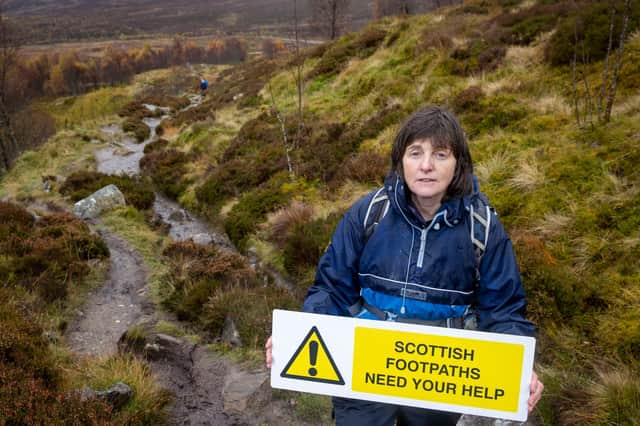Unprecedeted damage in the Scottish mountains as visitor numbers surge during lockdown


National Trust for Scotland said rapid erosion was now visible on Ben Lomond and Ben Lawers, with decades of conservation work now unravelling and irreparable damage now a risk.
Social distancing guidelines introduced during the pandemic has led to people stepping off the side of paths to let others pass– which wrecks the fragile verges and widens the route in the process.
Advertisement
Hide AdAdvertisement
Hide AdNTS said that damage is most acute at Ben Lomond, which usually sustains 45,000 to 60,000 walkers a year but by mid-October had registered 70,000 visitors.
At peak times, post-lockdown numbers on Ben Lomond are showing to be twice those of 2019.
At Ben Lawers near Loch Tay, wich around 30,000 people visit each year, monthly figures recorded after Spring lockdown lifted are more than double those seen in 2019.
Helen Cole is the National Trust for Scotland Property Manager at Ben Lawers National Nature Reserve. She said: “It’s wonderful seeing so many walkers and runners enjoying the hills, especially people who haven’t experienced this incredible place before. Ben Lawers is quite easy to get to from most parts of Scotland and when you’re at the car park, you’re already a third of the way to the top so we’re very popular
“It’s heartbreaking though, seeing accidental damage being done. People don’t know they’re doing it but something as simple as walking off the path can be quite a big problem if it’s done in the numbers that we’ve had recently. Social distancing has got a major part to play too, as people try and avoid getting too close to others.
“I’ve been working on footpaths at Ben Lawers for 30 years and I’ve never seen the damage quite as rapid as this. We’ve got some of the rarest mountain plants in Britain here and we’ve spent decades and hundreds of thousands of pounds balancing our conservation work with public access but what’s happened in the last few months has put our work back by years.
“The Trust’s footpath team has been working exceptionally hard to keep up but we’re already behind because of lockdown and furlough.
“Visitors can help at Ben Lawers, and all around the path network, by staying on the paths as much as they can. Avoid making your own routes where possible and take your time.
Advertisement
Hide AdAdvertisement
Hide Ad“If you meet someone coming the other way and have to step off the path, please remember to get back on it as soon as you can afterwards. The paths can be rocky, but are robust, and while the verges around them can be softer they get muddy and boggy very quickly which is the start of the erosion process.”
Groups should try and walk single file along the paths especially on narrow sections.
NTS has recommended that metal-tipped walking poles can damage the ground and have recommended that those with rubber tips are used instead.
The conservation charity has also advised that all litter should be taken home – even biodegradable items such as banana skins and orange peel, which can cause damage to delicate ecosystems.